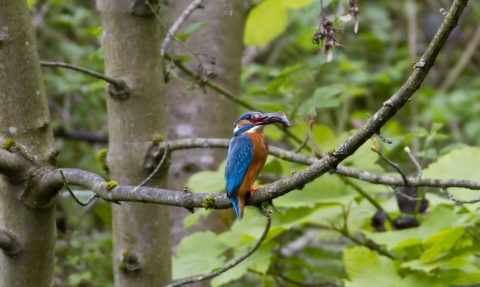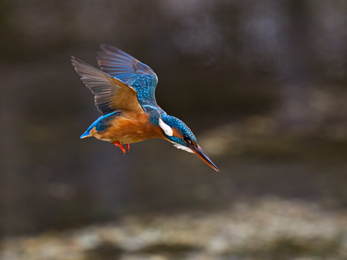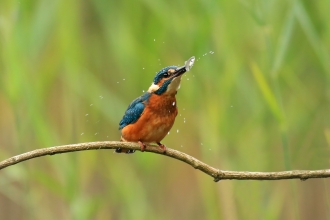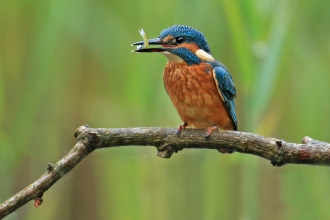
Chris Brown
Kingfishers
What are they?
A summer’s day by the riverside: blue skies, the wind blowing in the willow trees, damselflies flitting about the water’s edge, and the sound of running water. Amongst buzzing bees, hiccupping moorhens, and the song of the willow warbler, listen out for a high pitched, urgent ‘peep peep’ing and quickly look up and down the river: a kingfisher is flying past.
Where can I see them?
Surprisingly tricky to spot, the kingfisher spends most of its time sitting quietly on a perch, burnt orange breast on show, but on the move the kingfisher is transformed. A shock of blue: plunging into the water to spear a fish, or disappearing round the river bend in a burst of 'peep-peep-peep's. Many people are surprised by how small a kingfisher is when they first see one: only slightly bigger than a house sparrow. If you’re lucky enough to get a closer view, pay attention to that dagger-like bill: the male’s is all black whereas the female wears red lipstick on her lower mandible.
Over Kellet Pond – this reserve supports wetland birds such as sedge warbler, kingfisher and moorhen.
Brockholes Nature Reserve - kingfishers can often be seen along the river Ribble next to the reserve.
The Kingfisher trail - The Kingfisher Trail is a scenic 14-mile route connecting the rural West Pennine Moors to the urban centres of Bolton, Bury and Salford.
More information
A group of Kingfishers is called a concentration.








